
5 Ways to Measure Customer Feedback | Salesforce Guide
As obvious as it sounds, you can only sell a product that your customers want to buy. So collecting customer feedback is crucial to measure brand loyalty and analyze potential product improvements.
Although customer satisfaction is complex and not as easy to measure as revenue and growth, it has a significant impact on these metrics.
In this article, we'll find out how you can get to know customer experiences and opinions to make informed decisions and enhance your products, services, and overall customer experience.
Benefits of Measuring Customer Feedback
Customer satisfaction and loyalty are essential for long-term and successful cooperation.
86 percent of brand-loyal shoppers would recommend the brand to friends and family.
Source: kpmg.com
In most cases, unsatisfied customers can quickly find a solution elsewhere. This is why customer satisfaction is an important indicator of growth as well as a potential warning sign of customer churn.
Some benefits of measuring customer satisfaction are:
- Your clients feel heard. Each client has different needs and expectations. Asking your clients about them is the first step to refine the product, and offer customers a solution to their problem.
- You know how to improve the product. By understanding what your customers like and don't like, you can make informed decisions about which features to focus on, which need improvement, or what can be removed to improve the user experience.
- Customers come back. Valuing and responding to customer opinions demonstrates their importance, leading to increased satisfaction, increased loyalty, and higher customer retention.
- Your business grows. Satisfied customers are more likely to recommend your brand to others, leading to more customers and therefore more revenue. This, in turn, will allow you to scale your business and set a growth vector.
- You leave your competitors behind. Using customer feedback as a strategic resource allows you to differentiate yourself from your competitors by offering customized solutions and experiences.
![]() Don't forget to check out: Why Choose Salesforce CRM for the Hospitality Industry
Don't forget to check out: Why Choose Salesforce CRM for the Hospitality Industry
Customer Feedback Metrics to Measure
To narrow down the metrics to those that fit the most, first think about your own business goals. Typical metrics for measuring customer satisfaction include the following:
1. Net Promoter Score (NPS)
You can measure NPS by asking your customers whether they are likely to recommend your brand to others.
How likely is it that you would recommend [Organization X/Product Y/Service Z] to a friend or colleague?
When customers provide a rating from 0 (not at all likely) to 10 (extremely likely), it allows businesses to categorize them into three groups to determine their NPS:
- Promoters: customers who give a rating of 9 or 10 are considered promoters. They are typically loyal and enthusiastic advocates of your brand.
- Passives: customers who give a rating of 7 or 8 fall into the passive category. They are satisfied with your services, but not to the extent of being strong promoters.
- Detractors: customers who give a rating from 0 to 6 are detractors. They are dissatisfied and unlikely to make repeat purchases. Detractors may also spread negative word-of-mouth about your business.
By understanding the distribution of customers across these categories, businesses can gain insights into customer sentiment and make informed decisions to improve satisfaction and loyalty.
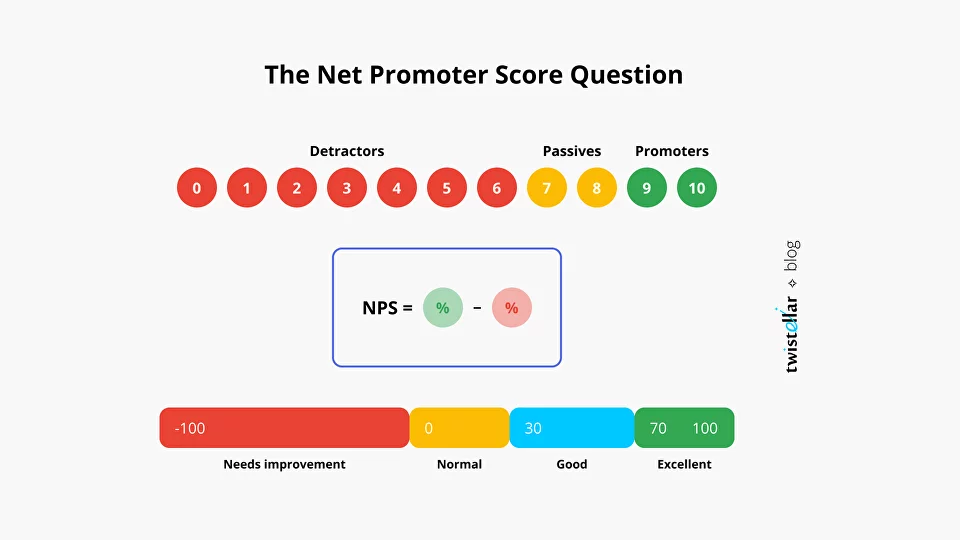
For example, a NPS of 3 for customer service means that users had a poor experience and are unlikely to recommend your business to others. So this is a clear sign that this area needs improvement.
2. Customer Satisfaction Score (CSAT)
The CSAT score is the percentage of satisfied customers who enjoy using your products and services. CSAT can be a great metric for forecasting sales and making smart, informed decisions.
It is measured by asking direct questions to the client. For example, you can ask, "Are you satisfied with the service provided to you or the work performed", offering several answer options:
- Very satisfied
- Satisfied
- Neutral
- Unsatisfied
- Very unsatisfied

Let's call those who gave a rating higher than neutral satisfied customers; when using a 10-point scale, these will be clients with scores of 6–10. To calculate the CSAT index, the number of satisfied customers should be divided by the total number of respondents.
Typically, the metric is expressed as a percentage, i.e., the result must be multiplied by 100%. An acceptable result is considered to be 75% or higher, depending on the area.
3. Customer Effort Score (CES)
Customer Effort Score (CES) measures the ease with which a customer interacts with your brand, focusing on their efforts to resolve problems or issues encountered during the process.
The CES metric answers the question:
How easy was it to interact with [company name]?
For example, place an order, get advice, issue a return, and so on. Using this metric, you can understand where users have the greatest difficulties as to make their path easier by eliminating this or that problem.
The calculation methodology is already familiar; answers can be in the ranges from 1 to 10, or from 1 to 7, or in the form of an emoji, or in any other form. After receiving the answers, it is necessary to calculate the arithmetic mean.

4. Churn Rate
The churn rate measures the number of customers who stop using your products or services, indicating customer dissatisfaction or other problems over time.
The churn rate is expressed as a percentage and represents the difference between the number of clients at the beginning and end of the period divided by the number of clients at the beginning of the period.
If you regularly collect information about the number of users who come and go, you can estimate the churn rate. This way, you can find out how many customers are dissatisfied or uninterested in your brand and may switch to your competitors. The indicator is considered acceptable at 70%. Keep an eye on these numbers and use them to develop your plans.
5 Ways to Measure Customer Feedback
Here are five effective methods for measuring customer feedback:
1. Surveys
Conducting surveys via email, website pop-ups, or apps allows you to collect structured feedback from customers. Surveys can be tailored to specific aspects of the customer journey or overall satisfaction.
Surveys can be hosted in different ways:
- Post-Call Surveys. When conducting post-call surveys, organizations typically ask customers a series of questions about their experience at the end of the call. Questions can cover various aspects such as the worker's professionalism, knowledge, and helpfulness, overall problem resolution, and customer satisfaction with the interaction.
- Email Surveys. They are especially effective because they can be filled according to the client's wishes. They allow businesses to reach out to customers or stakeholders and collect valuable information.
With clear instructions, personalized approaches, and well-designed templates, email surveys can encourage customers to actually complete them and provide actionable data for decision-making and improvement.
- In-App Surveys. In-app surveys are a powerful tool for collecting feedback directly from your mobile or web app. By embedding surveys in the user interface, you can collect information about users in real time and improve the user experience.
In-app surveys provide contextual feedback, allowing companies to understand user preferences, identify pain points, and make data-driven decisions to improve their product or service.
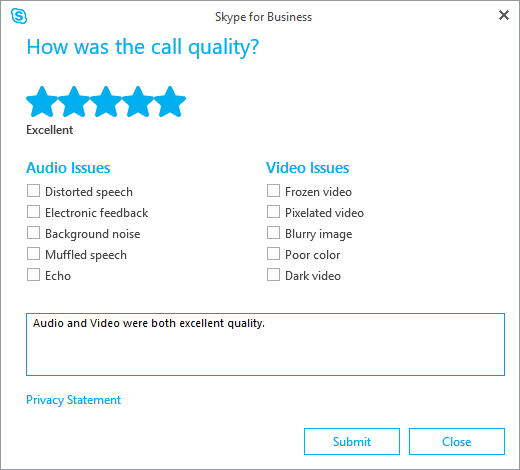
- Voluntary Feedback. Sometimes customers leave reviews voluntarily. Through voluntary feedback, the user often offers valuable information that the business may not receive through other channels.
By creating a culture that values and welcomes voluntary feedback, companies can gain valuable insights, identify areas for improvement, and strengthen connections with their stakeholders. Encouraging and valuing voluntary feedback helps organizations continually improve and meet the evolving needs of their customers, clients or employees.
2. Direct Responses
Direct feedback is an invaluable source of information from customers that provides insight into their perception of a brand, product, or service.
Some ways to collect feedback from clients by direct response method:
- Receiving feedback from clients via third-party agencies.
- Own call centres, complaint handling specialists.
- Receiving client feedback via a personal chat or meeting.
- Feedback received through a complaint or thank you letter.
- Surveys and questionnaires that provide direct client input.
Organizations often engage external agencies to collect customer feedback in a structured and sophisticated format. Face-to-face meetings and written feedback (letters of complaint or gratitude) solve often pressing problems, but they lack a structured format that prevents accurate and consistent analysis.
Conducting well-designed surveys with standardized questionnaires is considered the best approach to obtaining feedback from the desired customer segments and measuring their satisfaction.
![]() Check out another amazing blog by Twistellar here: Salesforce Email and Events Integration Options
Check out another amazing blog by Twistellar here: Salesforce Email and Events Integration Options
3. Web Analytics (Loyalty Metrics)
Web analytics can be used to measure customer feedback and loyalty metrics by tracking various online interactions and behaviors.
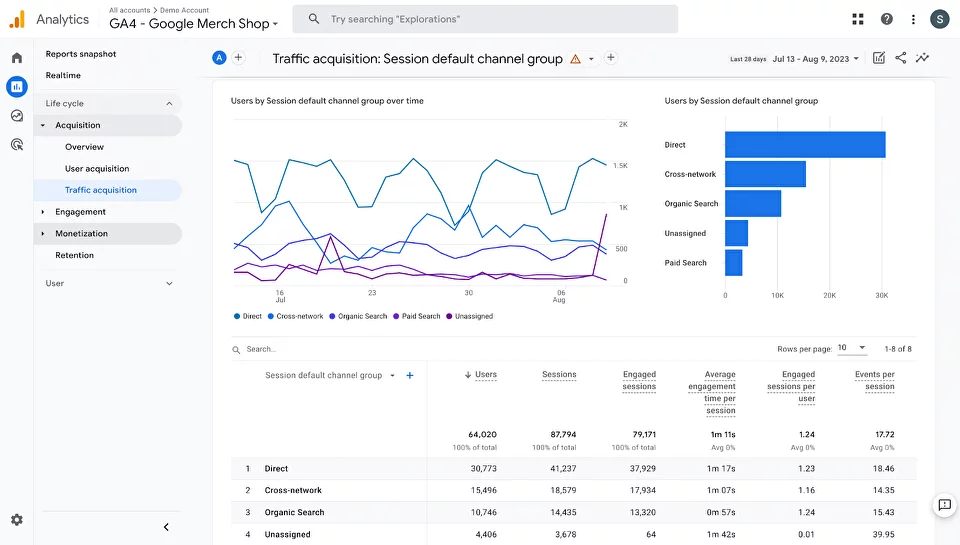
Here are some loyalty metrics commonly used in web analytics to gauge customer feedback:
- Churn Rate. Monitoring your churn rate can help you identify areas where customer satisfaction may be lacking and take proactive steps to retain loyal customers.
- CLV (Customer Lifetime Value) calculates the total value a customer brings to a business over their lifetime as a customer. By analyzing this metric, companies can identify their most loyal and valuable customers and tailor their strategies accordingly.
- NPS. Web analytics can provide information about customer behavior and interactions that can be correlated with NPS results.
- Average order value (AOV) measures the average amount customers spend per transaction. An increase in AOV indicates that customers are not only satisfied but also willing to spend more, which is a sign of loyalty.
- Conversion rate (CR) measures the percentage of website visitors who take a desired action, such as making a purchase or signing up for a service. A higher conversion rate indicates a positive customer experience and a greater likelihood of customer loyalty.
- Repeat purchase rate tracks the percentage of customers who make repeat purchases over a given period. A higher repeat purchase rate means satisfied customers who are loyal to the brand and its offerings and will return to purchase.
4. Social Media Mentions
Today, customers are more vocal on social media. They flaunt their purchases online while criticizing or praising brands they don't like. Social media can be used to understand what customers are saying about your product. Most social media platforms come with a business account feature that provides an analytics dashboard.
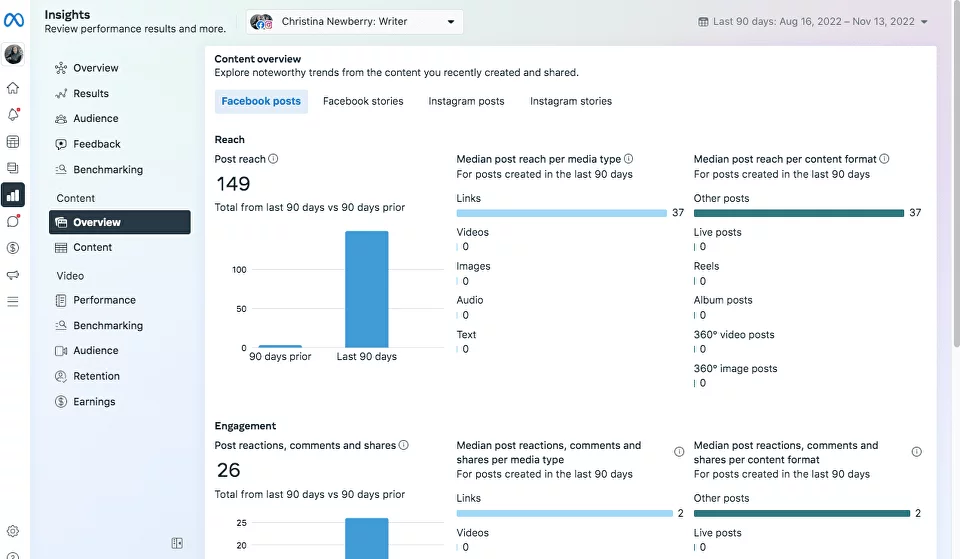
Observe your audience and focus on comment and post analytics to shape your strategy to increase satisfaction and engagement with your social media presence.
You can easily integrate your Salesforce org with your social media.
5. Emails
Email is a great tool for collecting and measuring customer feedback. By sending customer satisfaction surveys, NPS surveys, transactional feedback emails, and requests for reviews or feedback, companies can gather valuable information about customer sentiment.
Additionally, incorporating A/B testing into email campaigns helps optimize your feedback collection methods. Analyzing and interpreting email feedback allows companies to identify trends, solve problems, and improve the overall customer experience.
Bonus: Salesforce Surveys—Examples of Use
Salesforce Surveys is a feature provided by Salesforce that allows users to create and distribute surveys within their Salesforce ecosystem. You can design survey forms using a simple drag-and-drop interface, customize the survey layout and branding, and add various types of questions.
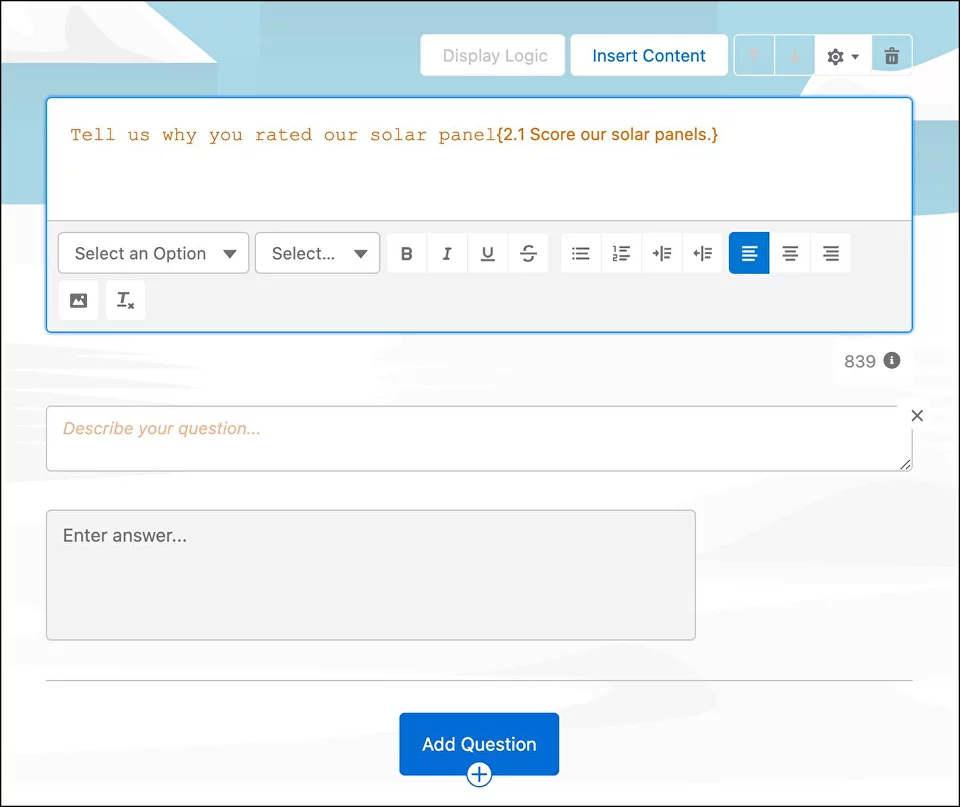
Surveys can be hosted on a simple community (Experience Cloud), so that community users can access the survey without logging in. Note that there are a maximum of 300 free responses included with each Salesforce organization's platform.
If you want to enhance the basic functionalities of Salesforce Surveys, you can try Salesforce Feedback Management. Obtaining the add-on Feedback Management licenses will allow your organization to go beyond the 300 free initial responses, as well as benefit from data mapping, post-chat surveys, and customer lifecycle analytics.
Users with appropriate permissions can access survey records and view survey responses within Salesforce. The data collected through surveys can be analyzed using Salesforce's reporting and analytics tools, allowing you to gain insights and make informed decisions based on the survey data.
Some examples of using Salesforce Surveys include measuring customer satisfaction after support interactions, collecting feedback on new product features, or gauging customer sentiment following a recent purchase:
- Customer Satisfaction Surveys. You can use Salesforce Surveys to gather feedback from your customers regarding their satisfaction with your products or services. By creating targeted surveys and distributing them to your customer base, you can collect valuable insights and identify areas for improvement.
- Event Feedback Surveys. If you organize events, Salesforce Surveys can be used to collect feedback from attendees. You can create surveys to gauge satisfaction with the event, gather suggestions for future improvements, and measure the overall success of the event.
- Employee Engagement Surveys. Salesforce Surveys can help you measure and improve employee engagement within your organization. You can create surveys to assess employee satisfaction, gather feedback on workplace culture, identify areas for improvement, and track changes in employee sentiment over time.
- Market Research Surveys. Conducting market research is crucial for understanding customer preferences, market trends, and competitive landscapes. With Salesforce Surveys, you can design and distribute surveys to gather data directly from your target audience, helping you make informed business decisions.
- Product Feedback Surveys. When launching new products or features, it's important to gather feedback from users. Salesforce Surveys enables you to create surveys to collect feedback on product functionality, usability, and overall satisfaction. This information can be valuable for product development and improvement.
- Website Feedback Surveys. If you have a website or an online platform, you can use Salesforce Surveys to gather feedback from visitors. By embedding surveys on your website, you can capture user feedback, identify areas for website optimization, and improve the overall user experience.
To Wrap Up
Measuring customer feedback is important for understanding customer satisfaction, improving products and services, and developing long-term relationships. Using a combination of methods such as surveys, direct responses, web analytics, social media monitoring and email analytics, you can gather valuable information to drive business growth and improve the overall customer experience.
This article was originally published at Twistellar.com




Responses